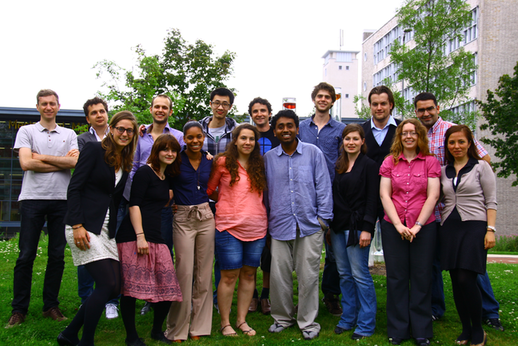Team:TU-Delft/Team2
From 2012.igem.org


|
Snifferomyces:Yeast with a sense of smell
The 2012 project of the TU Delft iGEM team, draws inspiration from the sniffer rats which can be trained to sniff out unexploded landmines and tuberculosis. Tuberculosis infects around 8 million people a year and kills approximately 2 million. Drugs to treat tuberculosis have been around for a long time, so a rapid diagnosis system can help curb the spread of the disease. This year our team takes the first steps to make for this problem a screening olfactory automation! |
Snifferomyces: A Tuberculosis Screening Automaton

The 2012 project of the TU Delft iGEM team, draws inspiration from the sniffer rats which can be trained to sniff out unexploded landmines and tuberculosis. Tuberculosis infects around 8 million people a year and kills approximately 2 million. Drugs to treat tuberculosis have been around for a long time, so a rapid diagnosis system can help curb the spread of the disease. This year our team takes the first steps to make for this problem a screening olfactory automation!

- Localization of receptor NR1 using FLAG
- Activation of receptor NR1 by the ligand niacin
- Activation of the reporter by the native ligand alpha pheromone
- Providing a platform to swap receptors, promoters and terminators more easy
- Device design for yeast olfactory detector
- Deterministic and stochastic simulations and property analyses of pathway model
- Data fitting for deterministic pathway model
- Prediction of a ligand-binding niche within the human niacin receptor 1 with Molecular Dynamics simulations
- To find stake holders and create awareness among our project, we presented our project to a very large audience by participating in several events like Llowlab on Lowlands and the Floriade.
- Our main goal is to innovate a diagnostic tool for tuberculosis, one of the major health issues in the world
- We have provided the iGEM Paris 2012 team two Biobricks. Together with the Amsterdam team we were able to organize a crash course on the area of synthetic biology and we were honored to attend the LIFE-symposium with the Cambrigde 2010-team.
Project Abstract
The aim of this yearӳ iGEM project will be the synthesis of an olfactory device for the purpose of characterization of volatile compound. Here, the aim is to introduce olfactory receptor gene fusions into Saccharomyces cerevisiae and linking these receptors to a transcription response. Aims:
- The diagnostics of the presence of tuberculosis bacteria in the lungs by sensing chemical compound methyl nicotinate by S. cerevisiae. For diagnostics, the response to these molecules is light, generated by the Lux proteins (visible blue light) or GFP (fluorescent green).
- Introducing receptors for sensing the presence of banana-smell (iso-amyl acetate). This is done to see whether communication between S. cerevisiae and E. coli is possible by this volatile intermediate.
- Supplying a toolkit which allows scientists to introduce olfactory receptors in yeast with minimal effort. Further we want to characterize the receptor parts submitted by the 2009 Hongkong university.
 "
"














